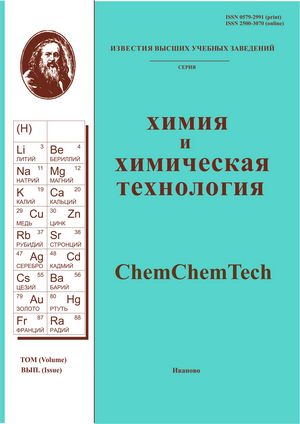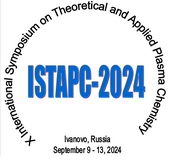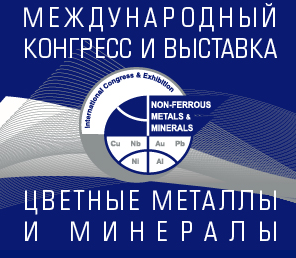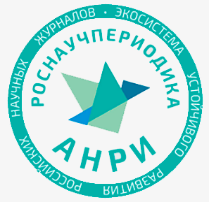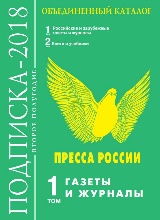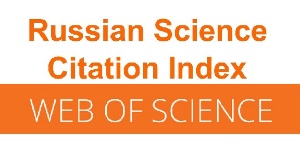НОВЫЙ УНИВЕРСАЛЬНЫЙ МЕТОД ДЛЯ ОПРЕДЕЛЕНИЯ АНТИКОАГУЛЯНТОВ ВТОРОГО ПОКОЛЕНИЯ В РОДЕНТИЦИДАХ
Аннотация
Твердые парафиновые брикеты являются одним из наиболее современных типов родентицидных приманок, поскольку предохраняют ее от воздействия окружающей среды и не снижают поедаемость грызунами. В данной работе предложен простой универсальный метод для определения бродифакума, бромадиолона и дифенакума в твердых брикетах, которые представляют собой смесь парафина, яда и наполнителя, в качестве которого могут быть использованы зерно, мука и тому подобное. Сложность в анализе приманок, содержащих парафин, заключается в том, чтобы от него избавиться. Для этого мы предлагаем использовать экстракцию в системе гексан-ацетонитрил. Парафин растворяется в гексане, в то время как бродифакум, бромадиолон и дифенакум – нет. Образующуюся двухфазную систему разделяли с помощью делительной воронки и собирали нижнюю фракцию. При наличии в пробе каких-либо наполнителей их отфильтровывали до разделения смеси, остаток промывали ацетонитрилом. Перед вводом пробы в хроматограф ее дважды фильтровали с помощью PTFE-фильтров пористостью 0,45 мкм. Наилучшее разделение компонентов смеси было достигнуто при использовании колонки Thermo Acclaim® Surfactant в качестве подвижной фазы был взят ацетонитрил и 0,1 М водный раствор ацетата аммония (рН 5,4) в режиме градиентного элюирования. Детектирование всех трех ядов проводили при длине волны 264 нм. Данный метод обладает чувствительностью 0,028 мг. Диапазон линейности от 0,00067 до 0,01 %. Коэффициент извлечения для бромадиолона составляет – 94 %, для бродифакума – 98 %, для дифенакума – 90 %.
Литература
Gratz N. Vector- and rodent-borne diseases in Europe and North America: Distribution, public health burden, and control. Cambridge University Press. 2006. 393 p.
Heyman P., Vaheri A., Lundkvist Å., Avsic-Zupanc T. Hantavirus infections in Europe: from virus carriers to a major public-health problem. Expert review of anti-infective therapy. 2009. V. 7. N 2. P. 205-217. DOI: 10.1586/14787210.7.2.205.
Pitt W.C., Driscoll L.C., Sugihara R.T. Efficacy of ro-denticide baits for the control of three invasive rodent species in Hawaii. Arch. Environ. Contam. Toxicol. 2011. V. 60. P. 533-542. DOI: 10.1007/s00244-010-9554-x.
Schmolz E. Efficacy of anticoagulant-free alternative bait products against house mice (Mus musculus) and brown rats (Rattus norvegi-cus). Integrative zoology. 2010. V. 5. N 1. P. 44-52. DOI: 10.1111/j.1749-4877.2010.00191.x.
Morand S., Jittapalapong S., Kosoy M. Rodents as hosts of infectious diseases: Biological and ecological charac-teristics. Vector-Borne and Zoonotic Diseases. 2015. V. 15. N 1. P. 1-2. DOI: 10.1089/vbz.2015.15.1.intro.
Meerburg B.G., Singleton G.R., Kijlstra A. Rodent-borne diseases and their risks for public health. Crit Rev Microbiol. 2009. V. 35. N 3. P. 221-270. DOI: 10.1080/10408410902989837.
Rylnikov V.A., Bogacheva A.V. Monitoring of brown rats on the territory of megalopolis. 9th International con-ference on urban pests, Birmingham, UK. 9-12 July. 2017. P. 147-152.
Roper E.M., Buczkowski G. Field evaluation of two single feeding anticoagulant rodenticides against Mus Musculus in a confined swine facility. 9th International conference on urban pests, Birmingham, UK. 9-12 July. 2017. P. 157-160.
Shkarin V.V., Shafeev M.S. Disinfectology. N.Novgorod: Izdatel’stvo NGMA. 2003. 368 p. (in Rus-sian).
Fisher P., O’Connor C., Wright G., Eason C.T. Persis-tence of four anticoagulant rodenticides in the livers of laboratory rats. DOC Science Internal Series. 2004. V. 188.
Erickson W.A., Urban D.J. Potential risks of nine ro-denticides to birds and nontarget mammals: a comparative approach. Washington, DC: US Environmental Protection Agency, Office of Prevention, Pesticides and Toxic Sub-stances. 2004. 225 p.
Mesmer M.Z., Satzger R.D. Determination of brodifacoum in commercial rodenticides by using high-performance liquid chro-matography with fluorescence detection. Analyst. 1995. V. 120. P. 2195-2197. DOI: 10.1039/AN9952002195.
Mesmer M.Z., Flurer R.A. Determination of chloropha-cinone and diphacinone in commercial rodenticides by liquid chromatography-UV detection and liquid chroma-tography-electrospray ionization mass spectrometry. J. Chromatogr. A. 2000. V. 891. N 2. P. 249-255. DOI: 10.1016/S0021-9673(00)00608-7.
Mesmer M.Z., Flurer R.A. Determination of bromethalin in com-mercial rodenticides found in consumer product samples by HPLC-UV-vis spectrophotometry and HPLC-negative-ion APCI-MS. J. Chromatogr. Sci. 2001. V. 39. N 2. P. 49-53. DOI: 10.1093/chromsci/39.2.49.
Kochetov A.N., Shestakov K.A., Shpilevsky G.M., Kuzmina L.G. Peculiarities of the determination of the content of 4-hydroxycoumarins substituted in the third position in disinfectants and pharmaceuticals. Khim.-farm. zhurn. 2013. V. 47. N 2. P. 41-50 (in Russian).
Jin M. C., Chen X. H., Zhu Y. Determination of five 4-hydroxycoumarin rodenticides in animal liver tissues by ion chro-matography with fluorescence detection. J. Chromatogr. A. 2007. V. 1155. N 1. P. 57-61. DOI: 10.1016/j.chroma.2006.12.074.
Vandenbroucke V., Desmet N., De Backer P., Croubels S. Multi-residue analysis of eight anticoagulant rodenti-cides in animal plasma and liver using liquid chromatog-raphy combined with heated electrospray ionization tan-dem mass spectrometry. J. Chromatogr. B. 2008. V. 869. N 1-2. P. 101-110. DOI: 10.1016/j.jchromb.2008.05.011.
Vudathala D., Cummings M., Murphy L. Analysis of multiple anticoagulant rodenticides in animal blood and liver tissue using principles of QuEChERS method. J. Anal. Toxicol. 2010. V. 34. N 5. P. 273-279.
Schaff J.E., Montgomery M.A. An HPLC–HR-MS-MS method for identification of anticoagulant rodenticides in blood. J. Anal. Toxicol. 2013. V. 37. N 6. P. 321-325. DOI: 10.1093/jat/bkt036.
Maršálek P., Modrá H., Doubková V., Večerek V. Sim-ultaneous determination of ten anticoagulant rodenticides in tissues by column-switching UHPLC-ESI-MS/MS. Anal. Bioanal. Chem. 2015. V. 407. N 25. P. 7849-7854. DOI: 10.1007/s00216-015-8954-1.

